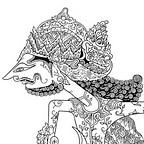SAJ — The Society for the Advancement of Judaism
A Photo-Essay on Reconstructionist Judaism
Established in 1922 as The Society for the Advancement of Judaism by Rabbi Mordecai M. Kaplan (1881–1983), SAJ is the founding synagogue of what eventually became Reconstructionist Judaism. The Reconstructionist movement is the first major Jewish religious movement to originate in North America, developing between the 1920s and 1940s within the consolidations of Conservative Judaism. At the time, the wider Jewish-American milieu included the Reform movement, whose intellectual lineage began in Europe, and the various traditionalists responding to it that collectively organized as Orthodoxy. Reconstructionists were thus operating in an already complex socio-religious setting, formally separating in 1955 and joined by a common disposition affirming Judaism as a progressively evolving civilization.
Rabbi Kaplan immigrated as a child in 1889 from what is now Lithuania and was raised in the Orthodox fold of Eldridge Street Synagogue, the first synagogue built by Eastern European Jews in the United States. While a student at City College of New York (CCNY) and then Columbia University, he simultaneously pursued religious studies at Jewish Theological Seminary (JTS), which began as an Orthodox institution before becoming the preeminent academic center of Conservative Judaism. Ordained as a rabbi in 1902, Kaplan initially served Modern Orthodox congregations, including as inaugural rabbi of the Jewish Center in 1918, but departed in 1921 as the philosophical gap with Orthodoxy proved too great.
Beyond his rabbinical service and the founding of SAJ in 1922, Kaplan also served as homiletics professor at JTS during 1909–63, as well as Dean of its Teachers’ Institute during 1909–46. Admirably, JTS leaders maintained Kaplan’s faculty position despite his controversial status. Nonetheless, Kaplan was often the target of polemics and book burning by traditionalist faculty and organizations, denounced as radical by the Orthodox and as naturalistic by the emerging Conservatives.
The historical arc of Reconstructionist development thus proved to be long, entwined in the shifts within and between the Orthodox and Conservative folds while tempered by Kaplan’s unwavering resistance to creating a new denomination. In 1955, it was Kaplan’s followers that established the Federation of Reconstructionist Congregations and Havurot (FRCH), which included some Reform congregations and later became the Jewish Reconstructionist Federation (JRF). In 1968, the Reconstructionist Rabbinical College (RRC) was established by Rabbi Ira Eisenstein (1906–2001), Kaplan’s son-in-law and second rabbi of SAJ. In 1974, the Reconstructionist Rabbinical Association (RRA) was founded and has since remained the professional association of Reconstructionist rabbis. In 2012, the JRF and the RRC tightened their relationship, further consolidating in 2017 to form Reconstructing Judaism, the central organization of the Reconstructionist movement.
Before Reconstructionist institutionalization, SAJ was host to the significant changes sparked by Kaplan’s pioneering thought, including the first American Bat Mitzvah held on March 18, 1922 for Kaplan’s daughter Judith (1909–96), who would later marry Eisenstein. Among Reform and Conservative Jews, the Bat Mitzvah only became widespread from the 1960s onward. Many such evolutions that began among Reconstructionists, including the civilizational mindset, are now normalized in other denominations and movements, but they are rarely attributed to Kaplan and Reconstructionists.
Reconstructionists remain philosophically pluralistic and evolving, but do hold to common principles based on the civilizational approach to Judaism. Godliness is experienced through acts of historical ritual, thoughtful socio-emotional fulfillment, and worldly good works, while individual Reconstructionists may personally affirm (or not) the concept of God on theistic, naturalistic, or other metaphorical terms. In radically rejecting the notion of Jews as the Chosen People, Reconstructionists shift the model of communal identity from just being Jewish to doing Jewish, celebrating the rich particularism of Jewish culture while grounding its lived experience in universalism.
Given the socio-historical significance of the first Bat Mitzvah, it is rather fitting that SAJ is presently led Rabbi Lauren Grabelle Herrmann and Cantor Lisa Shapanka Arbisser. The social evolution at SAJ has continued, as the congregation has affirmed LGBTQ members and interfaith families since the 1990s as well as patrilineal descent since the 2000s. In 2017, the motto “Judaism that Stands for All” was adopted, celebrating the great diversity of its congregants and the engaged communal outreach considered essential by Reconstructionists.
Before being called to SAJ in 2015, Rabbi Lauren founded Kol Tzedek (Voice of Justice) in 2004, a Reconstructionist synagogue in West Philadelphia that continues to thrive. At SAJ, Rabbi Lauren has developed and expanded a wide variety of programs and services, which presently include the specialized Hebrew School Makom (Place), Adult Learning in classes and special events, and Community Life via cultural festivals, local outings, and retreats. Along with multi-faceted public activisms, these initiatives foster a holistic environment of Spirituality, Arts, Life-Long Learning, Community (Kehilah), and Justice (Tzedek).
Although initially proving controversial, the Reconstructionist civilizational disposition lives at the heart of Jewish historical culture, one so quintessentially defined by dynamic intellectualism. The horrors of the 20th Century in Europe and the Middle East compelled so many Jews to return to their ancient homeland, but such devastations can never erase the social contributions Jews have made to so many communities throughout Diasporic history. In the same positive way that Reconstructionist Judaism has disproportionately shaped modern Jewish thought, Jewish intellectualism has shaped so many societies into true civilizations.
These photos were taken on a single day utilizing both a wide angle lens and a standard zoom lens. Acknowledgments and gratitude at SAJ go to Rabbi Lauren Grabelle Herrmann, Administrative Director Debbie Rudt, and Head Building Caretaker Fred Jusino. Rabbi Lauren graciously approved the production of this feature since initial email contact. Debbie and Fred kindly facilitated the interior photography and provided historical insights on the edifice. Rabbi Lauren and Debbie further reviewed the draft of this photo-essay.
